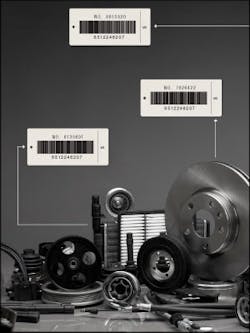Explaining parts pricing to a customer can be a lose-lose situation, says Becky Witt, industry management trainer and a Nebraska shop owner.
“To most customers, parts are all the same,” she says.
Customers can find the same part online that you’re trying to sell them in the store—but for a cheaper price, Witt says. At least, that’s what they’re thinking.
“And they look at you as if you’re trying to sell them a single Aspirin for $10,” she adds.
Parts mark-ups are critical to maintaining a profitable business, Witt continues. Still, they aren’t an easy sell to a customer. They can lead to awkward conversations at the front counter, and in some cases, customers wanting to buy their own parts.
It’s a slippery slope—one that could be getting steeper as online parts purchasing becomes more
prevalent with consumers.
According to the most recent data from Google’s search engine analytic GoogleThink, more than 62 percent of all customers research a service advisor’s recommendation online after receiving it. Forty percent of all consumers research how to perform the repair themselves.
And then there’s the parts-pricing issue. When searching for parts, three out of every four consumers look at “several” auto parts sites; more than 44 percent look at five or more. Thirty-nine percent of consumers search only by part category, meaning they aren’t interested in brand names—only price.
This, in most cases, is to gain a better knowledge of the process, a GoogleThink report explains. For shop owners, though, it brings about those often uncomfortable confrontations.
“Customers aren’t going to understand your process or why you need to mark up or charge a certain price,” says Michigan shop owner Bob Wills, who serves as the mechanical division director for the Automotive Service Association (ASA). “They might not have that knowledge and background, so the only way they can relate to it and understand it is on price.
“They might want to bring in their own part. It’s our job to explain to them why that is not their best option.”
Nothing New
Haggling over price and a bring-your-own-parts eagerness are not new customer phenomenons for the industry, Wills says, but the average consumer simply has more access to information today. That can be great for customers who understand the value a shop can bring. It’s a nightmare for those who focus solely on price.
Both Wills and Witt say the simplest solution is to develop longstanding relationships with customers; if they fully trust you, they aren’t going to try to bring in cheaper parts bought online.
But there will always be issues from time to time.
“Just the other day I had an issue with a brake kit from GM for their pickups and Tahoes,” Wills says. “We get them from our local dealer for $71, and our customer can look right online and see it for $54, plus shipping. Then we have a markup, which is roughly double our cost on it. So, I’m trying to explain to him why he should pay almost three times for what he sees online.”
It’s a tough sell, Wills says, and anytime you deal with a customer-furnished part, you’re taking a large risk. If that part fails, your shop will likely be held liable in court.
“Responsible and liable are very different things,” Wills says. “You might not be responsible for what went wrong—it wasn’t your fault—but you’re going to be liable.”
“The key is making them realize that paying the markup is paying for that quality. Customers might find a better price online, but my shop isn’t an online business.”
—Bob Wills, shop owner and mechanical division director for ASA
Finding a Fix
There are no absolutes in business, Witt says. And she wouldn’t suggest to a fellow shop owner to “never” take a customer-furnished part. There will always be exceptions to the rule. (She has a customer whose father works at a Toyota parts factory; that customer can come in with the exact part Witt needs and would use anyway.)
That being said, Witt also says to make it painstakingly obvious the benefits of using parts provided by the shop: convenience and value.
Witt has a customer-agreement contract to be signed in rare occasions of customer-furnished parts. Among items on it are that the customer will guarantee to come to the shop—regardless of the hour—within 60 minutes with a correct part if the originally provided part does not work, and they pay time-and-a-half on the rework by the techs.
“Most of the time, they don’t get halfway through the agreement before realizing how much more convenient it is for us to provide it,” she says. “They aren’t thinking of accuracy, or of the time savings. We need to remind them of it.”
And then there’s this: Eighty-one percent of all drivers say that quality is more important than price, according to GoogleThink.
“The key is making them realize that paying the markup is paying for that quality,” Wills says. “Customers might find a better price online, but my shop isn’t an online business. Your price online gets you a part; that’s it. I don’t do my business online. We provide more than a part. There’s labor, service and customer support. That’s the value.”



